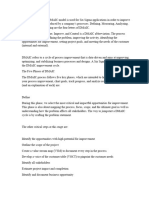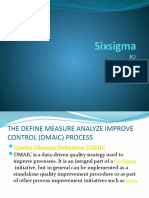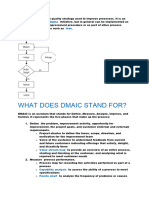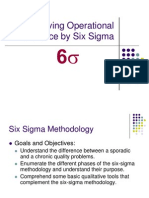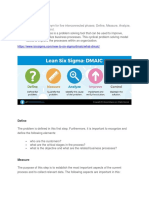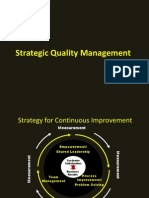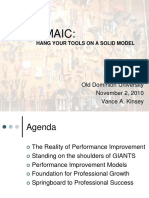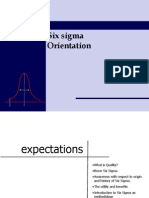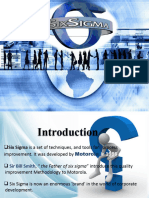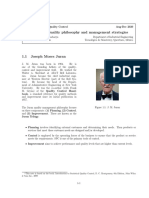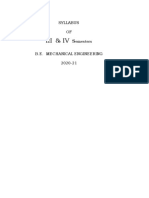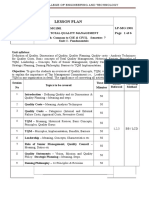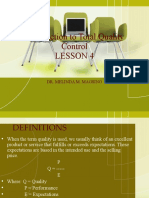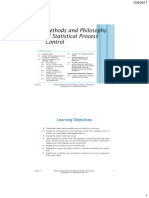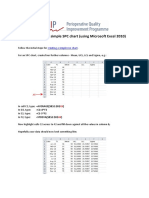0% found this document useful (0 votes)
49 views10 pagesDMAIC
DMAIC is a structured problem-solving methodology consisting of five phases: Define, Measure, Analyze, Improve, and Control. Each phase focuses on specific tasks such as defining project goals, measuring process performance, analyzing root causes, improving processes, and controlling future performance. This approach aims to enhance process efficiency and meet customer requirements effectively.
Uploaded by
Preethamgowda PreciousCopyright
© © All Rights Reserved
We take content rights seriously. If you suspect this is your content, claim it here.
Available Formats
Download as PDF, TXT or read online on Scribd
0% found this document useful (0 votes)
49 views10 pagesDMAIC
DMAIC is a structured problem-solving methodology consisting of five phases: Define, Measure, Analyze, Improve, and Control. Each phase focuses on specific tasks such as defining project goals, measuring process performance, analyzing root causes, improving processes, and controlling future performance. This approach aims to enhance process efficiency and meet customer requirements effectively.
Uploaded by
Preethamgowda PreciousCopyright
© © All Rights Reserved
We take content rights seriously. If you suspect this is your content, claim it here.
Available Formats
Download as PDF, TXT or read online on Scribd
/ 10


